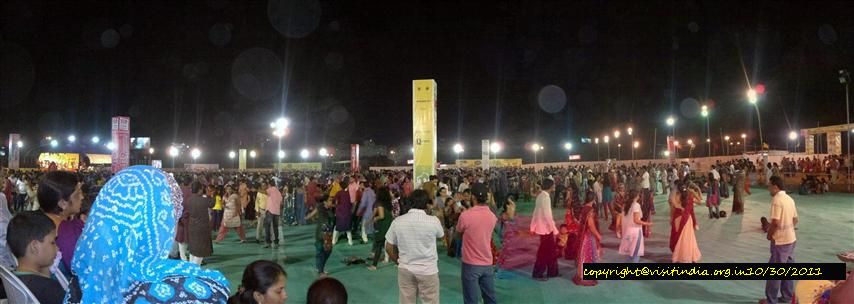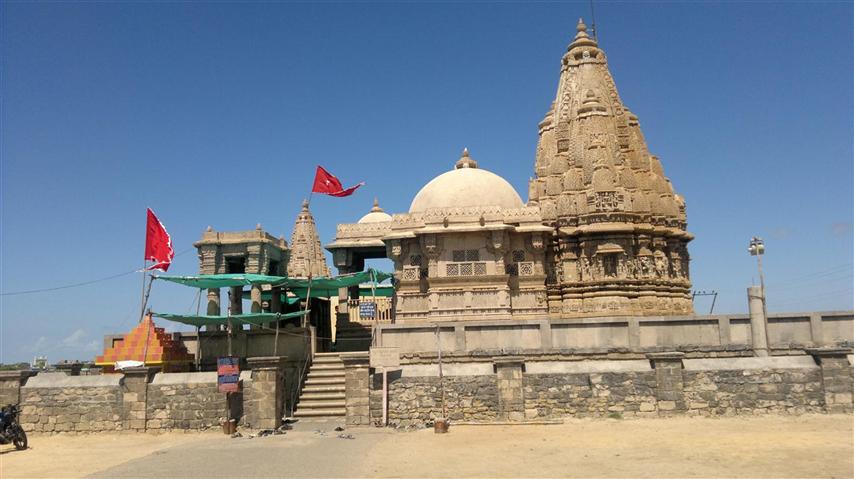

Blog
Ahmedabad - The Manchester of India
Ahmedabad, the principal city of Gujarat is the next destination of any tourist heading for the south India after Rajasthan’s majestic palaces, crumbling forts and camel safaris. Derisively called ‘Gardabad’ , the City of Dust by Mughal emperor, Jehangir, it is like any other polluted and noisy Indian city. But here are some interesting aspects to explored of this historic city founded in 1411 by Ahmed Shah after whom the city takes its name.
Ahmedabad, with a population of 3.3 millions, straddles the Sabarmati river that has dried to mere trickle now. It was here on the west bank of Sabarmati that Mahatma Gandhi established his ashram in 1915 to launch organized effort against the British government in the country. The ashram, the spartan living quarters are converted into a museum. It has a memorial centre, a library and a sound and light show for visitors in evening. An adjoining new complex has pictorial details of all the major events of his life. Displayed here are the various stamps issued by various countries to commemorate the birth centenary. Among the important letters penned down by Gandhi is a letter dated 27 July 1939 written to Hitler requesting the end of the second world war.
The room for receiving the guests where some important historical meetings took place, takes one back to the days of Raj and turbulence of those days. It was from here, in 1930 that he began his famous historic Dandi March with a handful of followers to the sea to protest against the salt tax imposed by the British. The ashram remains crowded mostly with school children from far and wide. Interestingly the letters posted from here are franked by a special Gandhi stamp.
As the Manchester of India, the city owes its prosperity three threads- cotton, silk and gold. Calico museum of Textiles in Shahi Bagh gardens is the right place to get to know the antique, modern textiles, rare tapestries, wall-hangings, costumes and block prints of which Ahmedabad is famous far. Also diplayed here are various old weaving machines
The city boasts of some of the beautiful mosques. Located in the south is the Jumma Masjid. Described as one of the most beautiful mosque, it stands on 260 columns supporting 15 domes at different elevations. Built by Ahmed Shah in 1423, it is situated beside MG road, to the east of ‘Teen Darwaja’. It is said the minarets of mosque were lost in two earthquakes.
Siddi Sayyad mosque, close to the river end of Relief road is celebrated for its exquisite stone window tracery- a superb and peerless example of dedicate carving that transforms stone into filigree. However, women are not allowed inside here.
Built in 1440, Rani Rupmati’s mosque is a representative of Indo-Saracenic, a blend of Hindu and Islamic architectural design. Its domes stand on twelve pillars each, with the central part so raised as to let in natural light without direct sunlight.
It’s quite amazing to find much talked about shaking minarets of Sidi Bashir mosque. It is believed that when one minaret is shaken the other rocks in return. However, you can’t verify it unless you are around here during an earthquake.
An extremely graceful design in Indo-Saracenic style can be seen in a popularly called Masjid-e-Nagina. Built in 1514 by the Hindu wife of Sultan Manmud Begada, its slender minarets are a fine example of well-executed design.
Kankaria Lake, at the southeast end of the city is a place to stroll about in the morning and evening. Circular in shape having a circumference of around three kms, it was constructed in 1451 by Sultan Qutab-ud-din. A causeway connects the middle island-garden having a summer palace called Nagina Wadi. Though an ideal place to refresh one self, its southern end has often been used to commit suicides by young lovers at a spot called ‘Suicide point’. Located nearby in the north are a mini zoo, planetarium aquarium where the entry is through a fee.
The old city had five gates called Delhi, Lal, Prem, Raipur and Sarangpur gates. However, a special triple arched gateway was also built by Ahmed Shah to serve as the royal entrance to Maidan Shah or Royal Square.
Just outside the Delhi gate, to the north of old city, Hatheesingh Jain temple is best known of Ahmedbad’s many richly ornated temples. Built with white marble, in 1848, by a rich Jain merchant, it is profusely decorated with intricate elegant carvings. Dedicated to Dharmnath, the 15th Jain Tirthankar, the temple has high quality sculpture besides a grand ‘ Kirti-Stambh’. Built strictly in accordance with the principles of Vastu Shastra, the whole structure stands on a platform surrounded by a courtyard, which is in turn surrounded by a colonnaded loister, containing subsidiary shrines. The temple is of ‘Bavan-Jnalya’ class with 52 small shrines.
While in Ahmedabad, must see is the ‘Luv garden’ area. Here everyday in the evening till date, Gujarati artisans set up the stalls on the adjoining road, to sell the attractive ethnic wares. A huge variety of colourful Gujarati dresses are available here at reasonable prices. Picking up a few items here are like carrying away the soul of Gujarat with you. It’s a great evening out as it is the social attraction of the city and area is filled with vendors, restaurants, and locals. At the Manekchand you can pick up block printed fabrics and rich embroideries.
As the Jains are a prominent community in Gujarat, their strict vegetarianism has contributed immensely to Gujarati cuisine. Gujaratis begin and finish off the meals with sweets. The main dishes include ‘Shreekhand’, a sweet dish made of curd spiced with saffron, cardamom, nuts, and candied flour cake. Undhyoo, usually taken in winter, is a mixture of vegetables, potatoes roasted in earthenware pot which is buried upside down with fire built on top. When the Sun starts return journey to Northern Hemisphere in mid-January, Sankranti is celebrated with ‘puri-undyoo.’ Ghatiya, taken with green chilly or Jalebi- sweets, are also taken for breakfast. All over, you can get Gujarati thali- it is the traditional all-you-can-eat vegetarian meal, which makes up a very satisfying meal.
Wherever you are in the city, you will come across the people who are always eager to help you out. Friendly nature of people in general leaves a pleasant impression about them. The traffic is pretty fast and one has to take good care of oneself while crossing the roads. Even in winter the cottons would do in the day while a nigh woolens are required.
One of the fascinating attractions of the surrounding area is the Akshardham, located at 30 kms in Gandhi Nagar, the modern capital of Gujarat. Dedicated to Lord SwamiNarayan, Akshardham, opened in Oct. 1992, is a place of education, entertainment and enlightenment. A twenty-three acre cultural complex where the ancient wisdom and the best of modern information technology have come together to create a powerful experience of Indian culture. There is so much to see and so much to experience. If you are in a hurry you can see parts in less than an hour if you desire full round then four hours if you desire full round then four hours are enough. However, there is enough to hold you back for the whole day if you wish so.
The complex has intricately carved, the majestic monument of 6,000 tons of pink sandstone is awash with spiritual stillness. The double walled, air-cooled four exhibition halls display an unforgettable experience of Indian culture. The first ever 14-screen multi-media presentation- ‘Integrovision’ reveals the Vedic truths of man’s search for eternal joy through spectacular images. Before you leave the interior, you have a wonderful opportunity, perhaps for the first time, to see the robots in action, enacting a scene from the life of Lord SwamiNarayan. It looks like a real life situation and you are sitting in some ecclesiastical gathering getting a spiritual message. The whole complex with beautiful lush green lawns, cleanliness and serene environs despite a huge mass of humanity make you feel like being in a heavenly world altogether. On weekends the place presents a picture of big fair as the crowd pours in from all over. Better you visit the place on other days.

_______________________________________________________________________________________________________________________________________________________________________________________


Copyright visitindia.org.in. All Rights Reserved.
Travelogues/Travel Logs of Roadtrips
Hit the road with the summary guides of our trips to various places in India. Any information feel free to drop a mail at info@visitindia.org.in


Get online driving directions, route guides, weekend planners, and customised itineries. Check out a few of our favorite user road trips, then start an adventure of your own.....Explore India by Road

Find us :-
Other Blogs
Travelogue - Road trip Delhi - Gujarat

Photologue - Delhi - Gujarat

